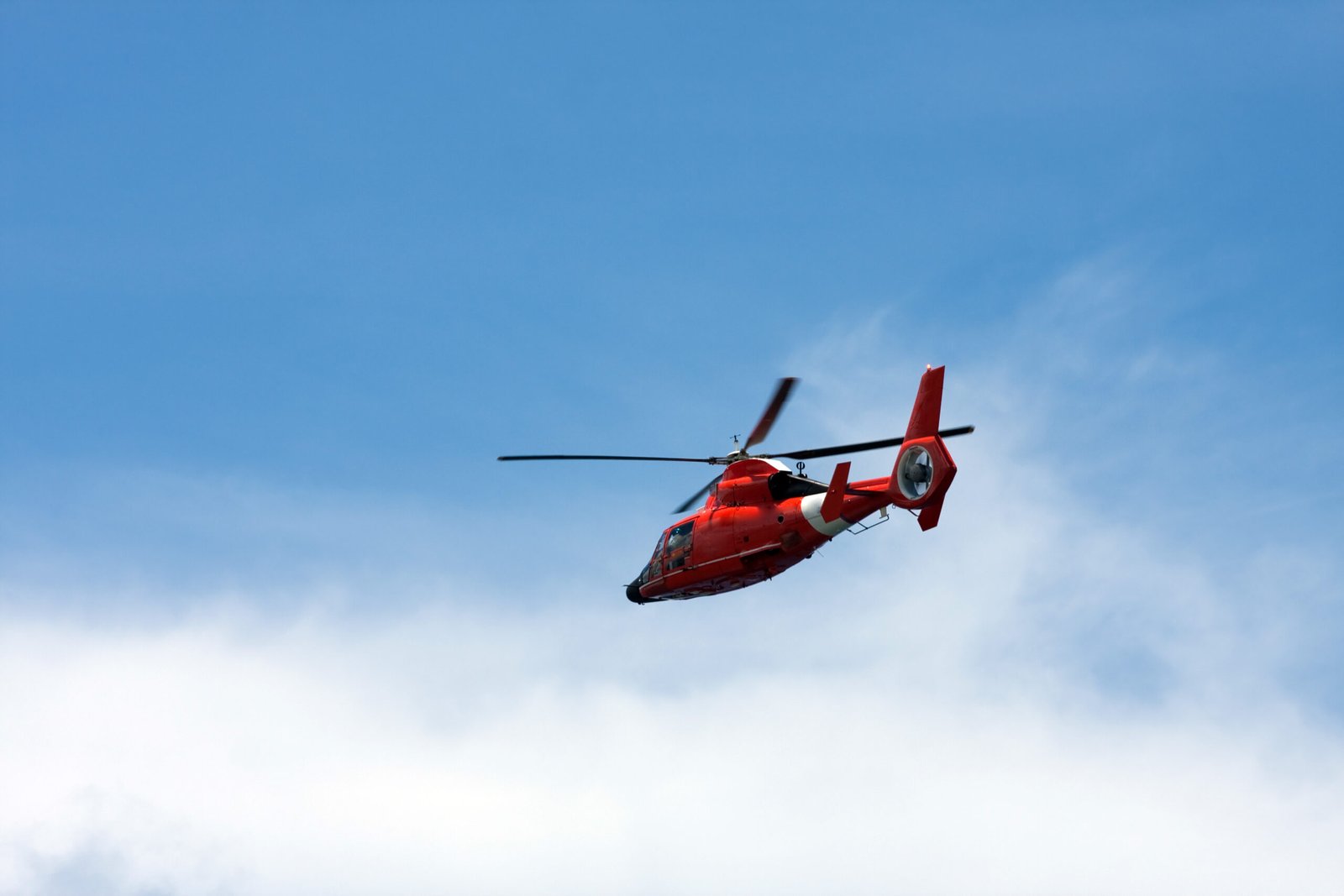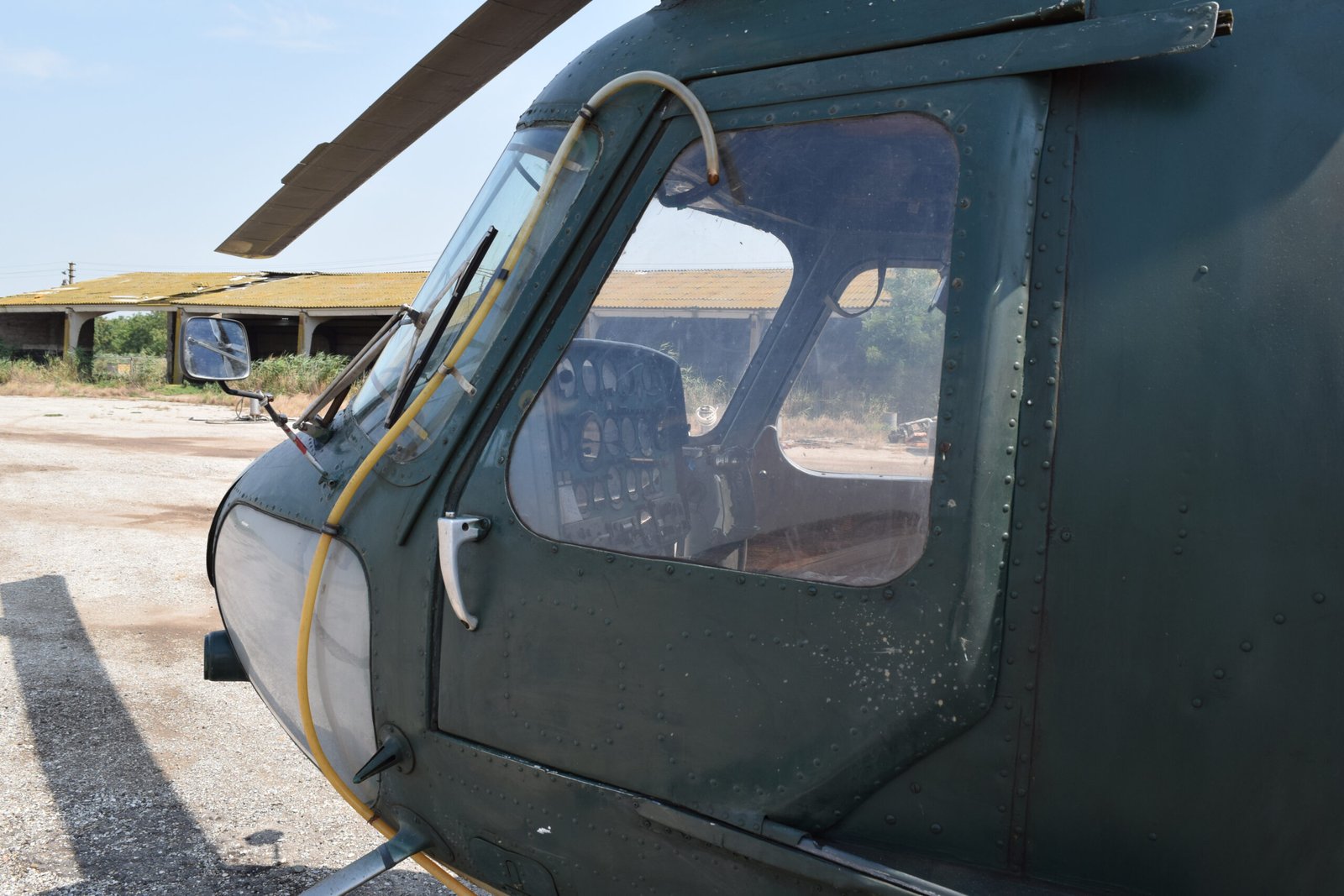air travel
From Runway to Skyway: The Evolution of Modern Air Travel
The world of aviation has undergone a remarkable transformation over the years, evolving from rudimentary experiments with gliders to sophisticated jets that crisscross the globe. As air travel becomes increasingly accessible and essential, the education surrounding it has also expanded significantly. This post will explore various types of aviation schools, highlight some popular aviation blogs and websites, and discuss FAA-approved flight schools, simulators, and their impact on aspiring aviators.

### Types of Aviation Courses
Modern aviation schools offer a plethora of courses tailored to meet diverse interests in the field. You can find programs specializing in:
1. **Pilot Training**: These courses range from private pilot licenses to commercial certifications, allowing students to learn everything from basic flight maneuvers to complex navigation techniques.
2. **Aircraft Maintenance**: For those fascinated by the mechanics behind flight, courses in aircraft maintenance teach everything about airframe systems and engine repairs.
3. **Air Traffic Control**: This program prepares students for a career managing aircraft movements on the ground and in the sky, ensuring safety and efficiency.
4. **Aviation Management**: Business-minded individuals may pursue degrees focusing on airport operations, airline management, or logistics within the aviation sector.
5. **Flight Dispatching**: Aspiring dispatchers are trained in planning flight routes, weather analysis, and regulatory compliance necessary for safely guiding aircraft.
Each type of course opens doors to unique opportunities within this dynamic industry.
### Must-Visit Aviation Blogs & Websites
For those looking to stay informed or deepen their knowledge about aviation trends and news, several excellent blogs and websites serve as invaluable resources:
**AirlineReporter.com**: A blog dedicated to covering airline products, reviews, and industry news with an engaging storytelling style.
**FlyingMagazine.com**: This site offers articles on flying techniques, gear reviews, safety tips, and personal flying experiences.
**AvGeekery.com**: Perfect for enthusiasts who love all things related to airplanes; it provides insights into aviation history along with current events.
**FlightAware.com**: A real-time tracking website that allows users to monitor flights globally while also providing historical data.
**AOPA.org (Aircraft Owners and Pilots Association)**: A comprehensive resource not only for pilots but also for anyone interested in general aviation advocacy.
Social media channels like Twitter and Instagram have become vital platforms for sharing quick updates; some popular handles include @FlightGlobal (for global aviation news) or @AvGeeksUnited (a community-driven account celebrating aviation culture).
### FAA Flight Schools & Simulators
When it comes to training as a pilot or technician in the United States, FAA-approved flight schools stand at the forefront. These institutions adhere strictly to federal regulations ensuring quality education. Notable examples include:
**Embry-Riddle Aeronautical University**: Renowned worldwide for its rigorous curriculum across various aeronautical fields.
**Purdue University Aviation Technology Program**: Offering both undergraduate degrees and hands-on flight training that integrates academic theory with practical experience.
**ATP Flight School**: Known for its accelerated programs designed specifically for those aiming quickly towards professional pilot careers.
Additionally, simulators play an integral role in modern training environments. Advanced simulation technology replicates real-world flying experiences without ever leaving the ground—making them indispensable tools for practicing emergency procedures or honing specific skills under controlled conditions.
As we look toward the future of air travel—a landscape painted with innovation—education remains pivotal in shaping tomorrow’s aviators. Whether you’re passionate about piloting planes or managing airport operations just remember that every great journey starts somewhere—often right from your local runway!
Passenger Experience in the Skies: Trends Shaping Modern Air Travel
In an era where technology and innovation intertwine, the aviation industry is undergoing a significant transformation. As travelers embark on their journeys, the passenger experience is being elevated through various trends that focus on comfort, efficiency, and engagement. From the educational pathways leading to careers in aviation to the wealth of information available online, let’s explore how these elements are shaping modern air travel.
*Aviation Schools: A Diverse Array of Courses**
For those aspiring to soar through the skies professionally, aviation schools offer a plethora of courses tailored to diverse interests. From pilot training programs to aircraft maintenance and air traffic control training, there is something for everyone.
1. **Flight Training Programs** – These are perhaps the most recognized courses, focusing on developing skills for piloting small planes all the way up to commercial jets. Students learn about navigation, meteorology, and flight safety.
2. **Aircraft Maintenance Engineering** – For those fascinated by machines rather than flying them, this program delves into maintaining and repairing various types of aircraft. Graduates ensure that planes meet safety regulations before take-off.
3. **Air Traffic Control (ATC)** – This specialized course trains individuals to manage airport traffic effectively and safely coordinate flights within controlled airspace.
4. **Aviation Management** – Combining business acumen with aviation knowledge, this field prepares students for leadership roles within airlines or airports.
5. **Drone Operations** – With drones becoming an integral part of logistics and photography industries, many schools now offer focused programs on UAV piloting and regulations.
These varied educational routes not only prepare students for specific careers but also contribute significantly to enhancing passenger experiences by ensuring safety and operational efficiency.
*Top Aviation Blogs and Websites**
In today’s digital age, staying informed about aviation trends has never been easier thanks to numerous blogs and websites dedicated to this dynamic field:
**Airliners.net** – A comprehensive platform featuring discussions on aviation news and a vast photo database of aircraft from around the world.
**The Points Guy** – Focused on maximizing travel rewards points while navigating frequent flyer programs; it’s a must-read for savvy travelers looking for value.
**Simple Flying** – This blog provides daily updates on airline news, including fleet changes and route announcements that directly affect passengers.
**Flying Magazine** – Offering insights into pilot experiences along with tips for aspiring aviators.
Social media platforms also play a pivotal role in connecting enthusiasts:
Twitter accounts like @FlightAware provide real-time flight tracking updates.
Instagram hashtags such as #aviationlovers showcase stunning aerial photography that captivates both hobbyists and professionals alike.
*FAA Flight Schools: The Gold Standard**
When it comes to formal flight education in America, FAA-certified schools hold a prestigious status. These institutions follow rigorous guidelines set by the Federal Aviation Administration (FAA) ensuring high-quality training standards.

Additionally, simulators have revolutionized pilot training by providing realistic environments without leaving the ground. Advanced technology allows future pilots to hone their skills in safe yet challenging scenarios before taking command of real-world flights.
In summary, as we navigate through modern air travel’s enhancements—be it through educational advancements or informative resources—the passenger experience continues evolving dramatically. With every new trend arising from technological innovations or shifts in consumer behavior, one thing remains certain: flying will be more accessible, enjoyable, and informed than ever before!
Soaring Skies: The Future of Sustainable Aviation Technology
Aviation, an industry synonymous with innovation and adventure, is on the brink of a remarkable transformation. As we hurtle toward a more sustainable future, the integration of cutting-edge technology will redefine how we think about flying. But before we dive into this thrilling era, let’s explore how aspiring aviators can prepare for these changes through various educational paths and resources.
*Aviation Schools by Types of Courses**
Diverse educational programs offer a multitude of courses that cater to every facet of aviation. At the forefront are flight training schools, which primarily focus on preparing students for piloting careers. These institutions provide hands-on flight experience complemented by ground school instruction covering navigation, meteorology, and regulations.

Then there are aviation management programs that equip future leaders with knowledge in finance, operations, and logistics within the aviation sector. For those interested in aircraft maintenance, airframe and powerplant (A&P) schools deliver specialized training to ensure safety and efficiency in aircraft operations.
Furthermore, universities often offer degree programs in aerospace engineering, focusing on designing and developing aircraft technologies. This sector is crucial for fostering innovations that enhance sustainability—such as electric propulsion systems or advanced aerodynamics.
*Lists of Aviation Blogs, Websites, Social Media Sites**
Staying informed is vital in an ever-evolving field like aviation. Fortunately, numerous blogs and websites provide insights into current trends and advancements. Noteworthy blogs include “Airliners.net,” where enthusiasts share photographs alongside discussions about airline operations worldwide. Similarly, “The Points Guy” offers travel tips while emphasizing sustainability initiatives within airlines.
For those who prefer concise updates through social media channels, Twitter has become a hub for aviation news; accounts like @FlightGlobal share real-time information on industry developments. Additionally, Instagram accounts such as @aviationdaily showcase stunning imagery from around the globe while highlighting eco-friendly practices adopted by various airlines.
YouTube also hosts a plethora of channels dedicated to aviation topics—like “Mentour Pilot,” wherein professional pilots discuss experiences while also addressing the importance of environmental stewardship in their profession.
*FAA Flight Schools/Airplane Schools/Simulators**
When it comes to official flight training in the United States, FAA-approved flight schools are pivotal. They adhere to strict regulations ensuring quality education for aspiring pilots. Some renowned institutions include Embry-Riddle Aeronautical University and ATP Flight School—both known for their comprehensive programs that combine practical flying experience with theoretical knowledge.
Additionally, simulation technology is revolutionizing pilot training methodologies. High-fidelity simulators allow students to practice complex maneuvers without leaving the ground—a critical aspect when considering emergency scenarios or learning new aircraft systems. Many modern flight schools incorporate simulation time as part of their curriculum to enhance overall proficiency while minimizing costs associated with actual flight hours.
In conclusion, as we look skyward towards sustainable aviation’s bright future filled with electric planes and eco-efficient technologies, it’s imperative that tomorrow’s pilots receive robust training through diverse educational avenues available today. With countless resources at their fingertips—from insightful blogs sharing industry wisdom to FAA-certified schools providing top-notch instruction—aspiring aviators are well-positioned to not just witness but actively participate in this exciting new chapter of aviation history! The sky may not be the limit after all; instead, it could be just the beginning!
Flight Paths: How Aviation is Shaping Global Connectivity
In an era where the world feels smaller than ever, aviation plays a pivotal role in knitting together distant regions, cultures, and economies. The advancements in technology not only enhance safety and efficiency but also shape the future of global connectivity. As we soar through the skies, let’s explore how aviation technology training, online resources, and emerging trends like drones are revolutionizing this industry.

Aviation technology has come a long way since the days of wooden biplanes. Today’s pilots rely heavily on sophisticated simulators that replicate various flying conditions and scenarios. These state-of-the-art training tools allow aspiring aviators to hone their skills without leaving the ground. Simulators provide a risk-free environment for learning, enabling pilots to navigate thunderstorms or emergency situations while receiving real-time feedback from instructors. This shift towards virtual training is not just cost-effective; it enhances safety by ensuring that pilots are well-prepared before they take to the skies.
For those looking to delve deeper into aviation beyond traditional flight schools, a plethora of online courses and ground schools are available at your fingertips. Platforms such as Coursera and Udemy offer specialized courses covering everything from aerodynamics to air traffic control principles. The flexibility of these programs allows individuals to learn at their own pace while balancing other commitments—perfect for those aspiring to become certified pilots or aviation professionals.
In addition to formal education, staying informed about industry trends is crucial for anyone passionate about aviation. A wealth of blogs and websites can serve as invaluable resources for insights into current events, technological advancements, and career advice within the field. Some notable mentions include:
1. **AirlineGeeks.com** – Provides up-to-date news on airlines around the globe.
2. **ThePointsGuy.com** – Focuses on travel tips and maximizing loyalty points.
3. **FlyingMagazine.com** – Offers expert reviews on aircraft along with pilot stories.
4. **PPRune.org** – A popular forum among pilots where they share experiences and advice.
5. **AviationWeek.com** – Delivers in-depth analysis of aerospace developments.
Social media platforms also play a significant role in connecting aviation enthusiasts worldwide. Twitter accounts like @AeroNewsNet keep followers updated on breaking news, while Instagram profiles such as @PilotLife showcase stunning aerial photography alongside glimpses into a pilot’s daily life.

As we explore further into modern aviation landscapes, drones are proving transformative—opening new avenues for connectivity and commerce while raising questions about regulations and airspace management. Drones have found applications beyond mere recreational use; industries such as delivery services, agriculture, surveillance, and even emergency response have started integrating unmanned aerial vehicles (UAVs) into their operations.
For those intrigued by this burgeoning sector or considering a career in piloting drones commercially, it’s essential to understand FAA regulations governing drone usage. The Federal Aviation Administration provides comprehensive resources online that cover licensing requirements for remote pilots (Part 107 certification), safety guidelines for drone operation, and tips for navigating airspace restrictions.
So whether you’re an aspiring pilot eager for knowledge or simply a curious traveler keen to understand more about our interconnected world through aviation—there’s never been a better time to get involved in this dynamic field! With technology advancing rapidly alongside educational opportunities expanding infinitely—aeronautical dreams can be transformed into reality faster than ever before! Embrace your passion today; who knows where your flight path may lead?
The Evolution of Flight: From the Wright Brothers to Modern Air Travel
The story of aviation is a tale rich with innovation, determination, and dreams soaring through the clouds. It all began over a century ago when Orville and Wilbur Wright achieved what many deemed impossible: they took flight. Their pioneering spirit laid the foundation for modern air travel, setting off an evolution that has transformed the skies into bustling highways filled with commercial jets and unmanned drones alike.
Today, technology plays an integral role in aviation training. Gone are the days when aspiring pilots relied solely on books and flight instructors to learn their craft. Enter simulators—sophisticated virtual environments that mimic real-life flying conditions with astounding accuracy. These high-tech tools allow students to experience everything from routine maneuvers to emergency situations without leaving the ground. By honing their skills in a controlled setting, future aviators can build confidence and refine their techniques before taking to the sky.
For those eager to dive deeper into aviation knowledge, numerous resources abound online. A plethora of blogs and websites cater to aviation enthusiasts and professionals alike. Some notable mentions include:
1. **Airways Magazine** – A comprehensive source for news, reviews, and insights about airlines worldwide.
2. **FlightGlobal** – Offers detailed analyses of current trends in aviation technology.
3. **Pilot’s Discretion** – A blog dedicated to sharing pilot experiences and tips.
4. **AvGeekery** – Focused on celebrating all things related to airplanes and flying.
Social media platforms also serve as vibrant hubs for aviators seeking community engagement or industry updates. Twitter accounts like @AviationWeek provide instant news flashes, while Instagram showcases breathtaking aerial photography from both hobbyists and professionals.
Moreover, numerous online courses have emerged, enabling aspiring pilots or enthusiasts to obtain essential knowledge remotely. Ground schools are now accessible from anywhere in the world; institutions such as King Schools offer comprehensive programs covering everything from FAA regulations to advanced navigation techniques. Platforms like Coursera even host courses pertaining not just to piloting but also aircraft maintenance, air traffic control management, and aerospace engineering.
As interest in aviation continues growing, job opportunities in this field expand alongside it. While becoming a pilot remains one of the most sought-after career paths—requiring dedication and extensive training—other roles like air traffic controller or flight engineer also promise rewarding careers within this dynamic industry.
In recent years, another revolution has taken flight—the rise of drones! Once seen merely as toys or gadgets for hobbyists, drones have rapidly evolved into critical tools used across various sectors including agriculture, real estate, search-and-rescue operations, and delivery services. This advancement has prompted regulatory bodies such as the Federal Aviation Administration (FAA) to establish guidelines ensuring responsible drone usage while promoting safety standards.
Navigating these regulations can be daunting; however, valuable resources are available through official FAA links that clarify licensing requirements for drone operators alongside best practices for safe flying.
Modern air travel stands on the shoulders of giants—the Wright brothers’ legacy is evident today more than ever as we witness remarkable advancements in technology reshaping our skies daily. With innovative training methods paving pathways for new pilots while integrating drones into our lives seamlessly signifies only one thing: The sky isn’t just a limit; it’s an open invitation awaiting exploration!





